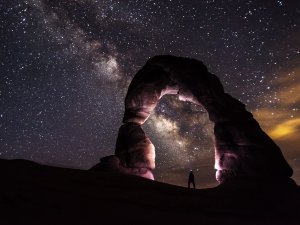A sea of new saffron and deep blue garb adorned by the Nihangs, a captivating display of shining weapons, speeding horses whipping the wind, and amazing feats of bravery-the Holla Mohalla is indeed a spectacular display of bravery and prowess.
“Hola Mohalla” is one of the major festivals celebrated by the Sikh Panth all over the globe with great zeal and zest. It is majorly celebrated at Takht Shri Anandpur Sahib, the birthplace of Khalsa. Sikhs from all across come over to Anandpur Sahib to be a part of the festival. As part of this festival, large "nagara" drums are accompanied by processions led by Panj Pyaras.
Holla Mohalla falls on the second day of the lunar month of Chet, which usually falls in March. A tradition established by the tenth Sikh guru, Guru Gobind Singh, it follows the Hindu festival of Holi by one day. But unlike Holi, when people playfully sprinkle color, dry or mixed in water, on each other, the Guru made Hola Mohalla an occasion for the Sikhs to demonstrate their martial skills and military exercises in simulated battles. The combination of the words "Hola Mohalla" stands for "mock fight". The celebration of Hola Mohalla in this manner reminds the people of the importance of valor and defensive preparedness, which were concepts dear to the Tenth Sikh Guru who was at that time fighting the Mughal empire. The festival was an effort to was also to instill courage and strength in the common people who were in low spirits at that time.
Hola Mohalla builds upon the Spring festival of Holi. The Guru Granth Sahib contains passages prescribing the celebration of Holi by serving God. The colors of Holi manifest in the Lord's love.It is recognized as a day of worship.
Holi Kini Sant Sev
Rang Laga Aat Laal Dev
Guru Arjan Dev Ji states in this verse that after living with God-conscious people, his love for Divine Naam has developed. These lines mean that he (Guru Arjan Dav Ji) is in love with the Lord, his mind is playing Holi with both permanent and everlasting colors which will never fade. As a result of his love for God, all his doubts, anguish, and adversities have disappeared. He is in total and eternal peace, bliss, and gaiety. In the endless colors of divine love, he is playing Holi with the universal power (God)in a delightful manner and playing in the eternal colors of joy.
Jaisa Rang Kusambh Ka Taisa Yeh Sansar
Mere Ramiya Rang Majith Ka Keh Ravidas Chamar
In another verse, Bhagat Ravi Das Ji describes divine love as a permanent color that brightens his life permanently, contrary to other loves of this world that are short-lived.
Customs and Celebrations of Hola Mohalla
Hola Mohalla was established by the Tenth Sikh Guru in 1680. According to historians, Guru Gobind Singh called Sikhs to Anandpur on Holi to practice manoeuvers and combat training. It became an annual event held in an open ground near Holgarh Fort across the rivulet Charan Ganga, northwest of the town of Anandpur Sahib.
There are mock battles, music competitions, and poetry competitions during this three-day festival. Using mock battles and demonstrations of swordsmanship and horse riding, the Nihang Singhs (members of the Sikh army founded by Guru Govind Singh) continue to carry on the martial tradition of the Sikh army. In addition to performing daring feats, they engage in activities such as gatka (mock encounters), tent pegging, bareback horse riding, and standing upright on two speeding horses.
There are also several durbars where Sri Guru Granth Sahib is present and kirtan and religious lectures are held. During the last day, Panj Pyaras lead a long procession that begins at Takhat Keshgarh Sahib and after passing through many important gurdwaras like Qila Anandgarh, Lohgarh Sahib and Mata Jitoji ends at Takhat Keshgarh Sahib. Flashing their shining swords, long spears, and sporting peaked turbans, the Nihangs gallop past on horseback spraying colors.
The locals organize langars as part of their Sewa (community service) for visitors to Anandpur Sahib. Villagers nearby provide raw materials such as wheat flour, rice, vegetables, milk, and sugar. Several women volunteer to cook and others wash the utensils.
Once known as the Guru di ladli fauj -the Guru's beloved army, the Nihangs are the main attraction of the present-day Hola Mohalla celebration. The festival is unique and distinguishable from other festivals as the Nihangs have tried to preserve the traditional form and content as established during its inception.
Hola Mohalla sends across a great message about the importance of filling our lives with Divine love for God, which is permanent and never changes, the kind of love which provides eternal peace, bliss, and wellbeing.
It reminds people of "valor and defense preparedness", concepts very dear to the Tenth Guru of the Sikhs, Guru Gobind Singh Ji. Guruji said, “Be a saint in the mind, have sweetness in behavior, and have warrior-like courage in your arms”. Holla for us today is also a reminder to be ready, both physically and spiritually. May we start to progress on our journeys and try to attempt to become a Sant (saint) and also a Sipahi (soldier).






